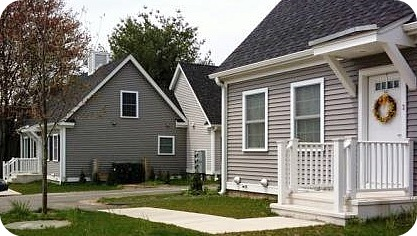Westport needs to do more than minimum with affordable housing

To meet Connecticut standards, Westport needs to approve over 700 new low-income housing units. These low-income housing units, such as Hales Court, are essential to correct the housing segregation that plagues Westport.
In the early 1930s, the Federal National Mortgage Association was created. Along with other New Deal legislation, it subsidized the creation of suburban housing, but only for white middle-class and lower-middle-class families. These families slowly accrued wealth through home equity and kept out minority populations with high housing costs. This segregation and housing inequity was what suburbs like Westport were built upon.
Modern-day Westport reflects its exclusionary roots, as out of Westport’s 9,573 households, about 350 or just about 3.6% are low-income households, according to Westport Affordable Housing’s Memorandum. These numbers are pathetic in comparison to the goal set by the state of Connecticut: that each municipality should have low-income housing making up 10% of the total housing inventory. Simply put, Westport needs to do significantly more to put into place affordable housing.
I’m not alone in this sentiment, as the National Low Income Housing Coalition recognizes that Connecticut is lacking 86,836 housing units. Most of this housing deficit would be covered if every municipality were to meet its 10% standard, and Westport has the responsibility of doing its part.
Some argue that Westport is doing all it can in regards to low-income housing, with the Westport Planning and Zoning Commission holding as much in an appeal to the state under C.G.S. §8-30g to avoid any punishment for not meeting the 10% standard. While the state recognized this appeal, I do not. On multiple occasions, low-income housing projects have been impeded for faulty reasons.
This is evident in the case of a housing project that started in 2014. The project took the developer four years to win approval for two duplexes and five single-family homes. The commission’s reasoning for pushing back on the plan was drenched in what some would regard as code words, without directly addressing race or income. According to CT Mirror, Chip Stephens, a Republican planning and zoning commissioner, voted against the plan, declaring, “It’s putting too much in a little area. To me, this is ghettoizing Westport.”
In order to be able to reach the state’s 10% goal, Westport needs to approve over 700 new low-income housing units. At the current rate at which new projects are approved and built, this goal wouldn’t be met for many decades. Though this process is arduous, it is necessary to correct the housing segregation that plagues Westport. Our town needs to correct its historical wrongs and begin to include a more whole, diverse population.

As staff writer Jake Fitzpatrick ’22 is embarking on his first year on Inklings, he hopes to write many articles voicing his opinions.
“My biggest...



















































